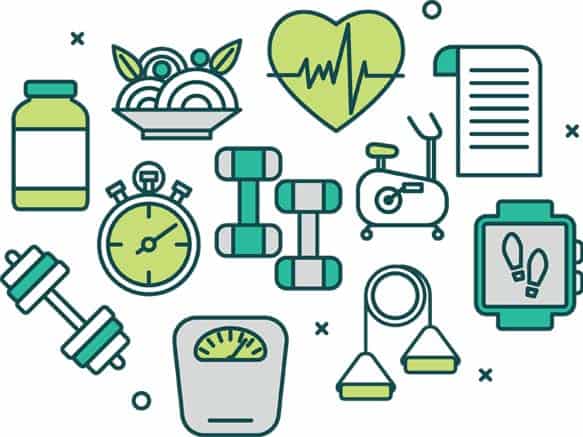
What is the most important part of managing your diabetes? What contributes to the success of an effective diabetes management?: Is it your diet? Is it your exercise routine? Is it the medications you take?
Should you be too focused on one thing or should you equally give importance to all parts of your diabetes plan? Our experts share tips on how managing type 2 diabetes work. From nutrition to exercise to emotional well-being, they confirm that they are all important in ensuring that your diabetes is well managed. Continue reading to find out!
[accordions id="13601"]
1. Marlene Bedrich RN, MS, BC-ADM, CDE

Here are a few things that come immediately to mind:
- Learn which foods count as carbohydrates.
- Talk to a Registered Dietitian to determine your specific carbohydrate requirements.
- Learn some basic carbohydrate counting skills – portion sizes.
- Eat a low fat diet.
- Try to eat 3 meals per day and avoid snacking.
- Try to do something for exercise every day – this doesn't need to be strenuous – consistency is important.
- If you have someone in your life who can support you in making diet and exercise changes this will make it easier.
- Set specific behavior change goals for diet and exercise and track your progress.
- Take a look at our website – we have some very practical information that we think you will find helpful www.deo.ucsf.edu.
2. Franziska Spritzler, RD, CDE

Here are my tips for adults living with type 2 diabetes:
- Cut way back on carbohydrates. Even "healthy" foods like whole-grain bread, oatmeal, and most fruits are very high in digestible carbs, which can raise your blood sugar. It's best to choose plant foods that provide fewer digestible carbohydrates and more fiber, such as greens and other non-starchy vegetables, berries, nuts and seeds.
- Make healthy food swaps. Replacing grains and starches with non-starchy vegetables not only lowers the carb content of your meal but also increases its nutritional value and may help reduce disease risk.
Examples: Grate cauliflower to use in place of rice, or cook it until tender and puree it to mimic mashed potatoes.
Use a spiralizer to create "zoodles" from zuchhini or simply serve spaghetti squash instead of pasta. - Avoid sugar in any form. Although they may be less processed than refined white table sugar, many "natural" sweeteners are equally high in simple sugars and have similar effects on your blood sugar levels. These include honey, maple syrup, agave nectar, and coconut sugar. To add sweetness while maintaining healthy blood sugar control, choose sugar-free natural sweeteners like stevia, erythritol or monk fruit.
3. Paula Ackerman, MS, RD, CDE

- Meal planning: strive to eat on a schedule, control portions (especially of processed carbohydrates) and avoid sugar beverages.
- Physical activity: strive for increased movement/activity and less sitting.
- Medication: it is crucial for one to understand how the medication works, pros, cons, potential side effects, etc. Medication compliance is essential and is greatly improved when one understands why they are on a given medication.
- Stress management and sleep: reducing stress and getting 7-9 hours of sleep most days.
- Monitoring: monitoring is essential for those using insulin and helpful for those on oral agents or controlled by lifestyle as it evaluates the impact of lifestyle changes or medication on glycemic control.
Regular follow up with your health care team. Type 2 diabetes is a silent disease and your team can monitor its progression, refer to appropriate providers and evaluate treatment options.
4. Dagny Danga-Storm, RD, LDN, CDE

- Follow the “KISS” approach (Keep it Simple).
- “Progress, not Perfection” – as we teach folks that Diabetes is a chronic, progressive disease we emphasize that they can help themselves feel better by making small yet significant Lifestyle changes.
- Self-tracking is so important because it will help you be more self-aware – keep a food journal, check your blood sugars and notice any patterns, follow through with trying to increase physical activity (something that YOU like and would do consistently ).
- Nutrition – by taking someone's Diet history, we can help the person figure out what foods or beverages are affecting their blood sugars – showing a person how much sugar is in their favorite drink, (show them actual beverage portion sizes with how many sugar cubes are in various drinks) & what about portion sizes? Giving each person a set of measuring cups, talking about the “white sugar, white flour” concept of the typical diet, and making small steps to increase fiber. Have folks bring in food labels of some of their favorite foods. Reading food labels together, & offer realistic options.
- Cook together! I work with a large Hispanic population, & (white) rice & beans is their meal staple. Mixing in some quinoa, or farro or whole wheat berries into their regular rice & beans has been an eye opener to folks in class. We also use “mrs. Dash” or dried herbs instead of high salt “Adobo”. They love the taste and learn basics of adding fiber into their standard meal. I also incorporate tofu into a basic meatloaf or taco recipe. We provide them with recipes.
- We offer vouchers to go to local Farmer's Markets. Once folks complete the series of Diabetes classes, we give each participant a $20.00 voucher to the local Farmer's Market. The county where I work also has “Double SNAP”, so we strongly encourage “Buying Fresh, Buying Local” and trying new vegetables (kale, garlic scapes, etc).
- Stress Management – Patients are often relieved to discover that stress can have an impact on their blood sugars. One major issue is Stress/Emotional eating. Naming it and accepting that they are not “bad” if they eat more (& usually the high carb foods) when stressed. Working through tactics for dealing with stress: recognizing emotional eating (journaling, talking about it with others), increased physical activity, making &/ or keeping social connections, getting enough Sleep, learning “problem solving” techniques.
“You will never change your life until you change something you do daily. The secret of your success is found in your daily routine.”
5. Melanie Cassity MSN, RN, CDE, Program Manager

- The first question we hear from most of our clients is, “What can I eat?” My response is to ask, “What are you eating now?” Healthy eating guidelines are the same for everyone, unless you have some other special diet requirement such as with kidney disease or Celiac Disease. Yes, people with diabetes need to manage carbohydrate portions but everyone should do that. So begin by looking closely at your current eating habits. Are you drinking a lot of carbohydrate, and calories, in sugar sweetened drinks such as soda, juices and sports drinks? Do you eat regularly through the day or only one large meal? Do you eat a variety of foods from all food groups, or are you mostly eating starches and meats? Look for those big opportunities to improve your habits first as these can often lead to big improvements in blood sugar and weight management. If you are not sure what healthy eating guidelines are, check these websites:
American Diabetes Association: www.diabetes.org
USDA: https://www.choosemyplate.gov/
Academy of Nutrition and Dietetics: http://www.eatright.org/ - If you are on diabetes medicines, take them correctly consistently. This sounds obvious but surprisingly, many adults do not take their medications the way they are prescribed. Diabetes medicines work, when you take them! If you are not sure how and when to take your medicines, ask your care provider, diabetes educator, or pharmacist. Do not modify the doses unless your provider gave you clear guidelines on when and how to adjust the doses. If you feel you are having side effects or aren't sure the medicine is working for you, talk with your provider.
- Move more! Have you seen recent headlines, “Sitting is the new smoking”? The message is, prolonged sitting and a lifestyle with little activity lead to many health problems including poor diabetes control. If you have long periods of sitting, get up every hour to move about, stretch or do some sort of active movement. Build more activity into your day with short walks, stair climbing, chair or desk exercises, daily chores and stretching. Find some form of exercise you enjoy to get at least 150 minutes of exercise per week.If you need help understanding or starting a plan to improve your diabetes, ask your care provider to send you to a diabetes educator. Local hospitals often have diabetes education programs. You may also search the ADA website https://professional.diabetes.org/erp_list_zip and the American Association of Diabetes Educators at https://www.diabeteseducator.org/ for lists of programs.
6. Amy Hess Fischl, MS, RDN, LDN, BC-ADM, CDE

A1: The one thing we need to remember about diabetes is that there are no holidays, no breaks (even if someone pretends like it is not there), so it is important to focus on small victories.
So, my advice for adults living with type 2 are the following:
- There is no such thing as perfection.
- Small changes are the key to success.
- While meal planning is the cornerstone of diabetes care, start small – eliminate regular soft drinks and juices (you have NO idea how much of an impact this can have) and cutting your portions by ⅓ – just these little changes can cut weight and improve blood sugars. Once you see the victories this can cause, you can move on to other changes.
- Move more – while we know the recommendations are to be active at least 30 minutes most days of the week, everyone has to start somewhere. So, find your starting point – 2 minutes, 5 minutes, 10 minutes and work your way up. Walk in place or around your home during commercials, be sure to get up from sitting at least every 30-60 minutes.
- No one can do it alone – have some kind of support; family, friends all need to be your cheerleaders and remind you that small changes are possible.
- Remember, diabetes is lifelong and the changes you make need to stand up to the test of time.
7. Carren Sellers, MMSc, RDN, LD, CDE, CLT

One of the major problems for anyone dealing with a chronic disease is how to get good behaviors to become habits. Often we start with good intentions only to have something derail our plans. One of the major reasons this happens is that we don't plan. Changing habits takes planning on a daily basis.
Plan two or three different breakfast and lunch options. Make sure at least one is really quick option that is also controlled calories (like a frozen breakfast sandwich rather than a sausage biscuit from a fast food restaurant). Think of dinner options that can be prepared quickly, like an individually frozen boneless, skinless chicken breast and a steam-in-bag of frozen vegetables. Other options include crockpot meals prepared ahead and frozen in individual plastic bags or freezer containers.
Prepare a typed grocery list, of the items you usually buy. The list is easier if it is vaguely in the order of your grocery store. When you open the last jar of something, put a check mark or circle it on the list, and the next time you grocery shop, you buy those items. When you grocery shop, buy enough of what you have planned for breakfast and lunch. Buy enough bread to make seven sandwiches, enough English muffins for five workday breakfasts, 7 types of vegetables (fresh, canned or frozen). Don't forget good snack options like baby carrots, cucumbers, grape tomatoes, red bell peppers, grapes, apples, and bananas.
Plan what exercise you will do. If you are more consistent if you go to a gym, pack your gym bag every night before you go to bed and put it in your car. IF you prefer to exercise at home, either walking in your neighborhood or in your own gym (treadmill, bike, etc), set an alarm on your phone. In other words, schedule the session just like you schedule an appointment with your dentist. Remember the goal, 150 minutes of exercise a week. That can be 5 days of 30 min exercise sessions or 3 days of 60 min sessions or whatever works for you. Any exercise at all is better than none.
Last item to remember, if you have a bad day, do the best you can and resolve to get back on track immediately!! There are no perfect days.
8. Kristine Duncan, MS, RDN, CDE

One tip would be to just start paying attention to portion size. This sounds simple, and it is straightforward, but it can be eye-opening and pretty impactful on food choices going forward. I wouldn't necessarily recommend portioning out every single thing you eat and not with the intention of doing it forever. But, just measuring a few of your favorite foods over a couple of days can make you aware of portions that you may not have paid attention to before. For example, what does an ounce of cheese look like?
If you have a food scale you can easily weigh it. What does a tablespoon of mayonnaise look like? Or a cup of pasta? If you have measuring cups and measuring spoons it just takes a few seconds to measure them out. Most of us pour until the glass is full, spread until the bread is covered, and scoop until the plate is loaded, without much thought to the quantities we're serving up. With type 2 diabetes, weight loss and carbohydrate control can be valuable tools to help manage the disease and food management starts with measurement.
The second piece of this would be to start reading labels on your favorite foods. All the numbers can seem overwhelming, so I suggest starting small. Do you have cereal in the morning and milk? Check the cereal box and milk carton for serving size, calories and carbohydrates just to start. Is a sandwich and chips a regular lunch for you? Take a peek at the bread label, the peanut butter jar, and the chip bag to see how the numbers look. What do you notice? How does their serving size compare to what you typically eat? If you're someone who eats the same foods often, you'll quickly get familiar with your standard choices and you'll soon know exactly what you're eating.
9. Marianne Tetlow

Managing Type 2 diabetes is more difficult than the average person realizes. When living with this condition, the patient has to manage a healthy lifestyle, possibly multiple medications, and many feelings that center around guilt and expectations of others. Finding a balance between these is the best way to succeed, but it can be challenging. The advice that I give those managing Type 2 diabetes begins with food,education,and emotional well-being.
Most people do not truly know what they are eating. Sure, they can tell you the name of the food, but rarely what it means. Everyone, diabetic or not, should pay more attention to what they are eating. The basics to start with in my opinion are to start with one of two methods. If you do not want to get into the number of grams of carbohydrates and do the math, then simply follow the plate method. Make half of every plate that you eat full of green vegetables or non-starchy vegetables.(Basically corn and potatoes do not count). The remaining half of your plate can be divided into two parts. One quarter can be a lean protein and one quarter can be a complex carbohydrate.
If you want to get into the numbers to manage your eating, then begin to pay attention to the Total Grams of Carbohydrate in each meal and snack. On packaged goods, look for the bold face type Total Carbohydrates. Pay attention to the serving size and begin to realize how many you are eating. You might need to consult with your doctor about how many total grams of carbohydrate to eat at each sitting. There are many paperback books that address this or nutritional apps to use on your phone or computer that can help with this for eating out and non-packaged foods.
The next area to focus on succeeding in life with T2 is education. Come prepared to doctor appointments with questions written down. Ask what your medication does to your body. The answer -Helps my diabetes is not good enough. Educate yourself on food, exercise, and the resources in your community. Take advantage of free services and hire experts when necessary. Come prepared with these topics do your appointment. Walking in and simply saying, “help me” is too general. Do your own research and then narrow down specific questions to ask and become more educated on these topics about your own body and your own life.
The final and I believe most important thing is to work on your emotional well-being. Most people living with diabetes feel judged by others for what they eat, when they eat, the amount of exercise they do or lack thereof and they feel that they have failed. Give yourself a break. Realize that you can improve your health. You should take diabetes seriously.
It is serious. Know that this is not your fault and you can take steps to drastically improve your life. Be gentle with yourself. Be gentle with others around you. Ask for help in meal planning or other areas, but also ask to be treated like a grown up. You are an adult and you know when you are making good or bad choices, just like the other adults around you. Someone is not watching everything they eat. So treat yourself fairly and make the effort to improve your health. You can manage a healthy lifestyle!
10. Leah K Wessinger, RD, CDN, CDE

Living with diabetes is a tough, lifelong commitment. I believe one of the most important things to help you with your daily living is support. Support is at the base of your journey. If you cannot find someone, or a group, near you to support you in your efforts to live a healthier lifestyle and manage your diabetes, you can find some great online tools like support groups, Facebook pages, or twitter profiles. When seeking information, look for reputable sources like the Academy of Nutrition and Dietetics and the American Diabetes Association.
11. Colette Nelson. MS,RD,CDE

Type 2 diabetes is often thought of as a disease of lifestyle. So first of all let's first look at diet. This is the great debate. Low fat, low carb, keto, calorie controlled, counting points... the list goes on and on. As someone living with TYPE 1 diabetes and a Certified Diabetes Educator I find living low carb for life is the best management for weight and blood sugar.
Consider all foods such as bread, rice, pasta and potatoes as foods that can raise your blood sugar, increase insulin resistance, and lead to potential weight gain.
Try substitution vs deprivation:
- Pasta – Try bean pasta's such as Banza (chick pea based) and others made from black beans, lentils, adzuki, or mung beans. All these pasta's are gluten free and high fiber so they have much less impact on blood sugar.
- Potatoes – Try steaming a cauliflower and adding almond milk, cottage cheese, spices and making low carb mashed potatoes minus the starch
- Rice – Try chopping a steamed cauliflower, letting it sit for 20 minutes, then draining the excess water. Now prepare it much like you would any rice dish with different spices and flavors.
Buy a Veggie Bullet or spiralizer that can create wonderful zucchini and squash noodles that can accompany any protein to create a low carb meal in minutes.
Finally there are a lot of low carb wraps on the market that can be substituted for bread and have higher protein and fiber to be more blood sugar friendly than traditional whole grain breads.
Second to diet, you have to move your body. It is recommended that we move 30 minutes 5 times a week which is a total of 150 minutes of exercise. Try using pedometers, Fit Bits, apps on your phone, workout buddies, exercise classes etc. Find something that is going to help make exercise a part of your life. Additionally I always recommend that you not only focus on cardiovascular but muscle building. It is important that you weight train to maintain muscle mass and keep your basal metabolic rate high so that you are burning more calories while at rest.
Earlier initiation of insulin is going to be a trend in the future. Remember, insulin does not have any side effects other than hypoglycemia. That is becoming less of a concern with the new basal insulins lasting 36 to 42 hours - more forgiving than first generation basal insulins. But more exciting, we now have inhaled insulin, Afrezza, that doesn't require a patient to inject. This insulin is the first ultra rapid insulin on the market for pre-meal dosing. In Type 2 diabetes we know that a person loses their first phase insulin response to food. Afrezza could be given in addition to an oral medication at each meal to prevent post meal blood sugar spikes even without giving a basal insulin. That means no injections. This would of course be determined by your Doctor and other factors such as A1C, C-peptide, and insulin levels. But it is certainly another approach some doctors may consider offering their patients now that we have a non-invasive way to address post meal blood sugar spikes.
In summary, Type 2 diabetes needs to be treated to win. This means beta cell preservation. In order to do that we need to keep blood sugar levels as near normal as possible, 70-120 mg/dl. Keeping that in mind we need to avoid foods that raise insulin levels (starches/sugars/fruits), start moving your body daily, reduce stress levels, and begin the discussion about using insulin sooner in the disease management rather than waiting till beta cell failure.
12. Rahaf Al Bochi, RD, LD, CDE

One of my biggest tips for people with diabetes is to eat breakfast. People with diabetes may check their blood sugars in the morning and notice that it's high, so they avoid eating breakfast thinking this will help lower their blood sugars. This is the exact opposite of what happens. People with diabetes can have excess sugar released from the liver overnight and into the morning. Eating breakfast will help 'turn off' the liver and will help with lowering blood sugars. It's important that people eat a balanced breakfast that has a mix of whole grains, protein and healthy fat to help slow down the rise of blood sugars and keep you satiated. Examples include a scrambled egg with spinach in a whole wheat wrap, oatmeal with nut butter, or greek yogurt with nuts. Plan ahead what you'll have for breakfast for a stress-free and productive morning.
13. Amy Shults RDN, CDN, CDE

The most important thing someone with Type 2 diabetes needs to do is know their A1C. The A1C is an average of your blood sugars over the past 2-3 months, so it shows the big picture of your blood sugar control. Your provider should be checking your A1C every 3-6 months; make sure they always tell you what it is.
An appropriate A1C goal for many people is less than 7. If you are young and have only had diabetes for a short period of time, less than 6.5 would be even better. If you are older and/or have frequent hypoglycemia, a higher A1C goal of less than 7.5 or 8 may be appropriate.
To lower your A1C, a combination of diet, exercise and medication can be used. If you're struggling to meet your target, meet with a Certified Diabetes Educator to come up with a plan. He or she can assess where your pitfalls are, help you come up with different strategies to lower your blood sugars, and then will keep you accountable.
Now that you have some of these tips under your belt, we hope that you can aim to manage your glucose levels as close to your target by giving equal importance to your lifestyle. This includes exercising regularly, having a balanced and healthy nutritional lifestyle, taking your prescribed medications regularly and keeping stress at bay.
TheDiabetesCouncil Article | Reviewed by Dr. Christine Traxler MD on May 22, 2020


